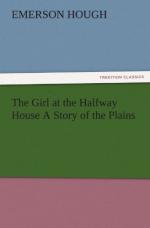“It’s that same Domineck, isn’t it, Lucy?” said Mary Ellen, leaning over the fence and gazing at the fowls.
“Yess’m, that same ole hen, blame her fool soul! She’s mo’ bother’n she’s wuf. I ‘clare, ever’ time I takes them er’ chickens out fer a walk that ole Sar’ Ann hen, she boun’ fer to go off by herse’f somewheres, she’s that briggotty; an’ first thing I knows, dar she is in trouble again—low down, no ’count thing, I say!”
“Poor old Sarah!” said Mary Ellen. “Why, Aunt Lucy, she’s raised more chickens than any hen we’ve got.”
“Thass all right, Miss Ma’y Ellen, thass all right, so she have, but she made twict as much trouble as any hen we got, too. We kin git two dollahs fer her cooked, an’ seems like long’s she’s erlive she boun’ fer ter keep me chasin’ ‘roun’ after her. I ’clare, she jest keep the whole lot o’ ouah chickens wore down to a frazzle, she traipsin ‘roun’ all the time, an’ them a-follerin’ her. Jess like some womenfolks. They gad ‘roun’ so much they kain’t git no flesh ontoe ’em. An’, of co’se,” she added argumentatively, “we all got to keep up the reppytation o’ ouah cookin’. I kain’t ask these yer men a dollah a meal—not fer no lean ole hen wif no meat ontoe her bones—no, ma’am.”
Aunt Lucy spoke with professional pride and with a certain right to authority. The reputation of the Halfway House ran from the Double Forks of the Brazos north to Abilene, and much of the virtue of the table was dependent upon the resources of this “hen ranch,” whose fame was spread abroad throughout the land. Saved by the surpassing grace of pie and “chicken fixings,” the halting place chosen for so slight reason by Buford and his family had become a permanent abode, known gratefully to many travellers and productive of more than a living for those who had established it. It was, after all, the financial genius of Aunt Lucy, accustomed all her life to culinary problems, that had foreseen profit in eggs and chickens when she noted the exalted joy with which the hungry cow-punchers fell upon a meal of this sort after a season of salt pork, tough beef, and Dutch-oven bread.




